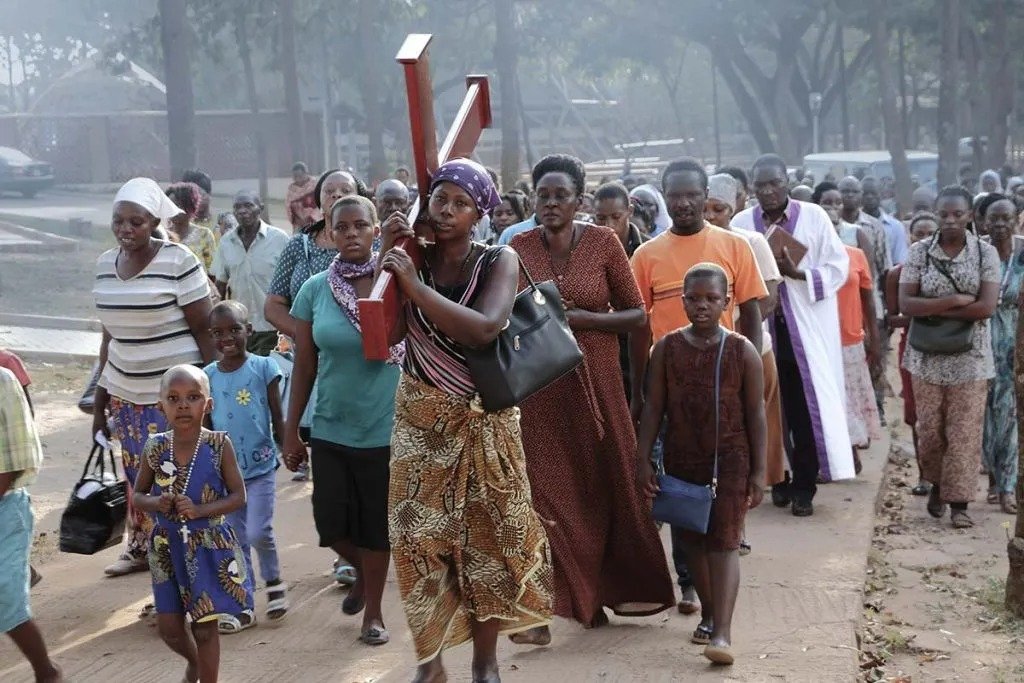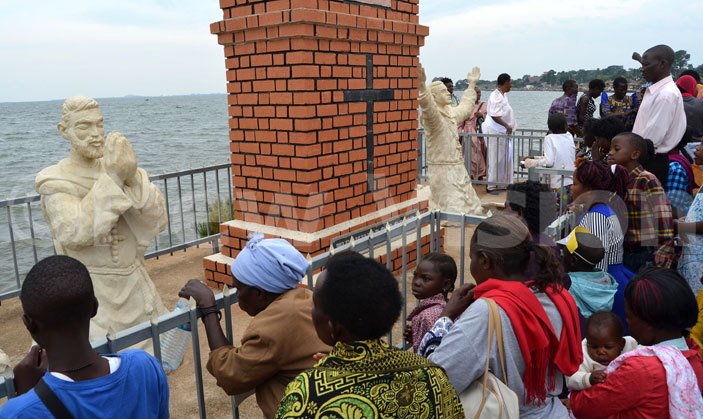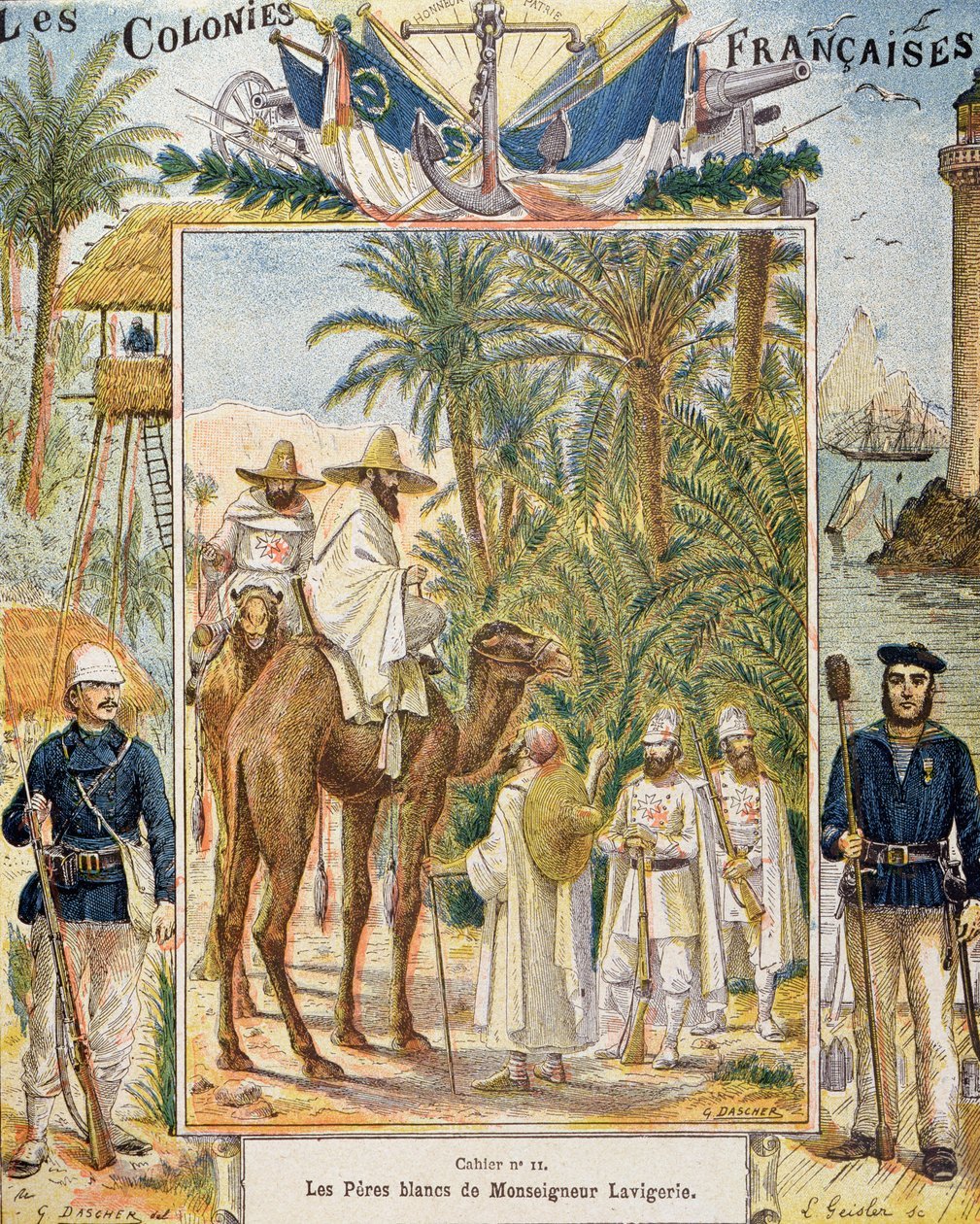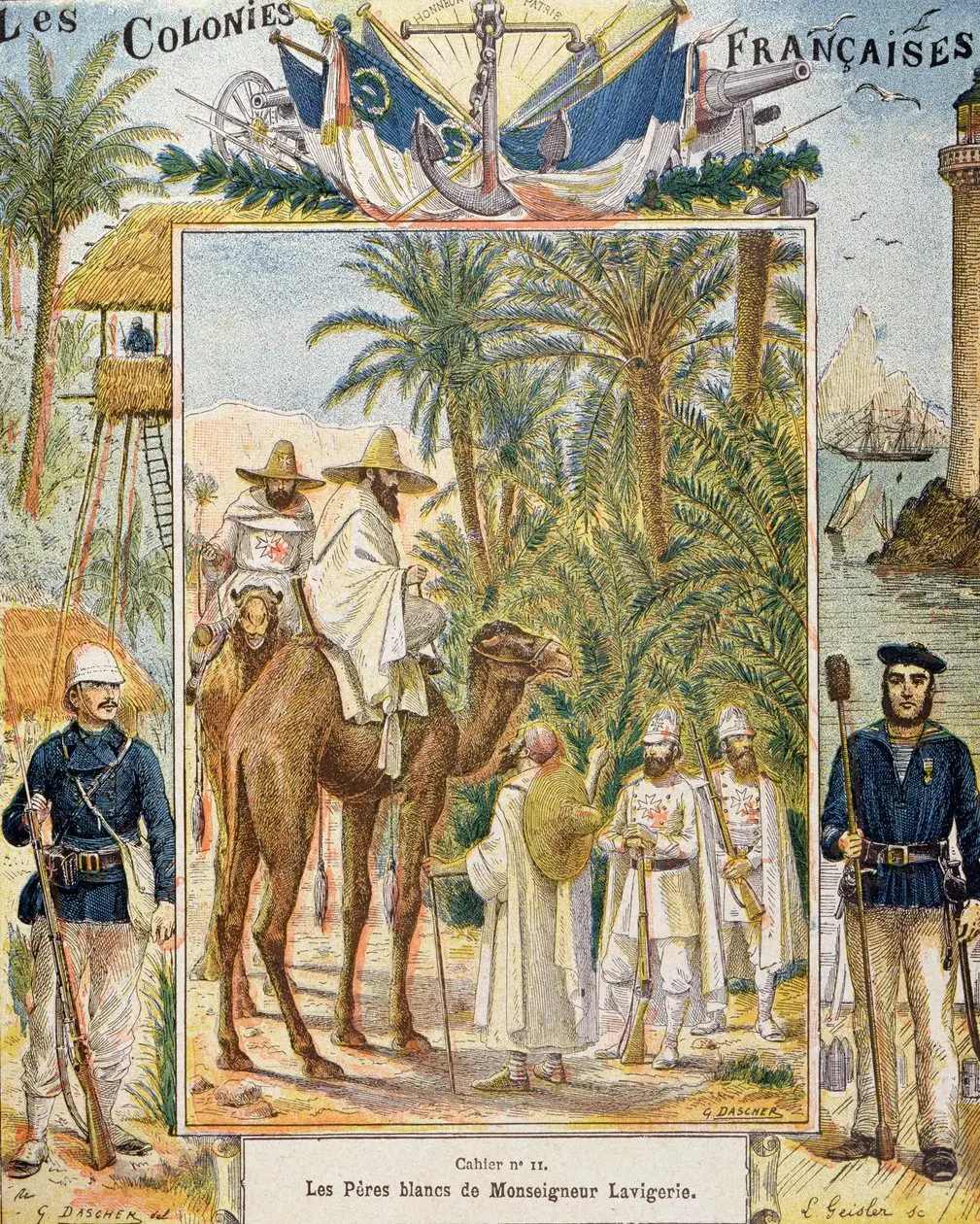The First Mass in Uganda

The First Mass in Uganda, Missionaries from many countries such as Marseilles and France left for Uganda on 2nd April 1878. Missionaries that were appointed to Tanganyika as well boarded a ship the previous day before easter Sunday. These arrived in Zanzibar and crossed to Bagamoyo on 30th may on the mainland. The missionaries then re-organized themselves to go to Tagora where they arrived on 17th June 1878.
The white fathers started their missionary work among the native tribes of the upper Nile region in the year 1878. The first baptism took place on easter Saturday the next year. It should be noted that Islam had already been established in Buganda but its adherents were more interested in trading than converting natives. The Islam acted as a stepping stone to the spread of Catholicism by Rev. Simon Lourdel and Rev.Bro. Amans who were welcomed in a moslem family at kitebi where they stayed for 15 days before facing kabaka Muteesa 1.
Catholics are always grateful to Cardinal Lavigierie who spearheaded and set up a group of white fathers who are commonly known as the missionaries of Africa. He sent five missionaries to Uganda region by then known as Nyanza Vicariate under the leadership of Rev.Fr. Livinhac who later became a bishop.
Other missionaries were Rev. Fr. Girault, Rev. Fr. Barbot, Bro. Amans and Rev. Fr. Simon Lourdel who was the youngest and was later nicknamed Mapeera by the Luganda speakers. Since he was the youngest, he often referred to his elders as “Fathers” thus he was often heard responding to his fellow missionaries MONPERE which is a French word which means “MY FATHERS”. So, with such a word the Baganda added it to the guava tree called omupeera to get his name Mapeera.
The Journey and Arrival of Missionaries in Africa
The missionaries were all French men of the white fathers sent by Cardinal Lavigierie in 1868 together with their five missionaries who were appointed to serve in Tanganyika mission. On their way to Uganda, they passed via Suez Canal the port of Eden and finally to Bagamoyo. This acted as a collecting center for the slaves.
In Bagamoyo, they found a group a group of catholic missionaries-holy spirit fathers who had arrived in Tanganyika. This helped them in spreading evangelization which brought them under one umbrella. The holy spirit missionary’s generosity went beyond religious affiliation, tribe and nationality and it should be remembered that they warmly welcomed Mr. Alexander Mackay in 1877. Mr. Alexander Mackay was an employee of the church missionary society which was situated in London. When he was attacked by malaria on his way to Uganda, he was fully treated until he recovered since he was seen as a fellow foreigner and a missionary.
On 17th of June 1878, they left Bagamoyo to Tabora in a big caravan. The major problem they faced was malaria which killed most of them before reaching to Tabora. The missionaries left Tabora to kageye-kwanza on 30th October 1878. At Kwanza, Fr. Lourdel and Bro Amans were chosen from the five missionaries to cross to Uganda in order to seek permission for the entire group. These two crossed Lake Victoria by canoe and it was known as ‘’Nalubaale” by the Luganda speakers.
Meeting the Kabaka

On 17th February 1879, the two missionaries reached Kigungu at kyettale and it’s marked by a monument. They spent two days and then proceeded to Mutungo by boat next to kabakas residence In Rubaga. There canoe started cracking 2 miles from kyettale and thus hurriedly landed at Kaweta below Bugonga village where the parish church of Entebbe stands.
On their way to Rubaga, they spent a night at kisubi and proceeded to lubaga via seguku. On 21st February, the kabaka learnt of their arrival and ordered to be taken to kitebi near mutundwe. At kitebi, they were received by a Muslim, Amir Ssekikubo on his land sub-parish church of kitebi in Bunamwaya was constructed. The church was named Mapeera memorial church but later the land was offered by his grandson Musa Kaggwa. This is where the remains of the great Cardinal Nsubuga are and he assisted in the construction of the mosque.
The church missionary society members were given a place in Nateete by the kabaka so as to settle their mission of spreading evangelism. These included Lieutenant shergold smith, Rev. C. T Wilson and Alexander Mackay who had earlier come to Buganda when he had accompanied Henry Stanley in 1879 on his mission to discover the source of river Nile.
The arrival of the catholic missionaries caused anxiety among the protestant missionaries. Mackay on several occasion persuaded the kabaka not to allow the catholic missionaries but that wasn’t convincing enough. Mackay was not an employee of the Anglican missionaries and thus helped in the construction because he was a certified engineer from the university of Edinburg in Scotland.
The kabaka eventually allowed the catholic missionaries to appear at court on 23rd march 1879 to fully explain their mission at his palace at Rubaga where the current catholic cathedral stands today. Brother Amans and Fr. Mapeera appeared before the king with many gifts, Mackay was also there. Mackay was requested to interprete in Kiswahili since he knew it very well but to Mapeeras surprise MacKay was just damaging than useful. Mackay stood up and told the king to condemn their doctrine because of teaching Mariolatry, obedience to the pope, prayer to the saints and image worship. And according to Mackay’s actions and the king’s response, Mapeera sensed it that Mackay was not doing right.
Mapeera immediately asked to introduce himself directly and suspended Mackay’s services and later Mapeera asked kabaka Muteesa 1 to give them permission to teach the catholic faith in his territory and permission was granted. Later after Muteesa`s first audience Lourdel and Aman`s returned to kitebi where they constantly under guard. Later Muteesa gave them better land at Nabulagala-Lubya. Lourdel and Amans took up their new residence on 7th march 1879.
The catholic mission station in Uganda was formed and they would visit the kabaka frequently to explain to him their doctrine in details. Fr. Mapeera always explained to the kabaka about the virgin Mary, the mother of Jesus who was the son of God. The king was pleased with the information since within his kingdom the queen mother was recognized as the Nnaabagereka a cultural title given to the wife of Buganda kingdom.
In 1879, the missionaries asked for another plot of and since the place in kitebi was small and couldn’t accommodate them and thus the king gave them a place in Lubya. Mukasa was appointed by the king to lead them to the new place. It was during this time that Fr. Lourdel informed the kabaka about the other colleagues that had stayed at kageye in Tanganyika as they wait for the king to grant them permission to cross to Buganda.
The kabaka was filled with joy and informed Gabunga who was the chief admiral of the royal boats to prepare four boats and he was accompanied by Musisi who was the head of king’s messengers and Bro. Amans would lead them to the place where the other missionaries were kept. The number of boats had to increase to 20 because they were many that had to be transferred.

The First Mass in Uganda
On 3rd may 1879, the group set off to Mwanza and reached on 31st may 1879. On 4th June 1879, the missionaries and the royal messengers started the journey back to Buganda. The journey was amazing and it led them to Kigungu on 17th June 1879. After a day in Kigungu they left to Busabala where Fr. Livinhac was left because he was suffering from Black water fever. He was carried on a bark cloth stretcher to reach Lubya where the missionaries were staying.
The group as it was sent by Cardinal Lavigierie was again gathered together. The first mass was held on 25th June 1879 on the Ugandan soil. During the celebration, the priests dedicated the country to the protection and guidance of the blessed Virgin Mary. Muteesa after the mass on 27th June 1879 received the whole group for public audience. It was a great moment in the king’s enclosure on lubaga hill.
Its from there that people started visiting the catholic mission and catechetical instruction began. Later, Fr. Lourdel requested for another place since the previous one was far from the fountain. The kabaka in response gave them another place called Kasubi Nabulagala near Kasubi tombs and its were the present Nabulagala Catholic parish stands.
The work to bring all the remains of four out of five missionaries to Uganda was begun by the late Emmanuel Cardinal Nsubuga in the 1970s and it was completed on 6th march 2011. The remains of the 4 missionaries that were present at the first mass was brought and re buried at Nabulagala and that was there resting place however the remains of Fr. Lodovic Girault weren’t found. The mass on that day was led by Emmanuel cardinal Wamala. During mass a number of Bishops attended.
Read About
8 Must See Attractions in Uganda
Some of our religious packages
2 Days Uganda Martyrs Trail Namugongo Catholic Shrine Tour
3 Days smallest church itinerary in Uganda
3 Days Journey to Namugongo shrine
4 Days Uganda Spiritual Journey
5 Days Uganda Martyrs Pilgrimage




Leave a Reply